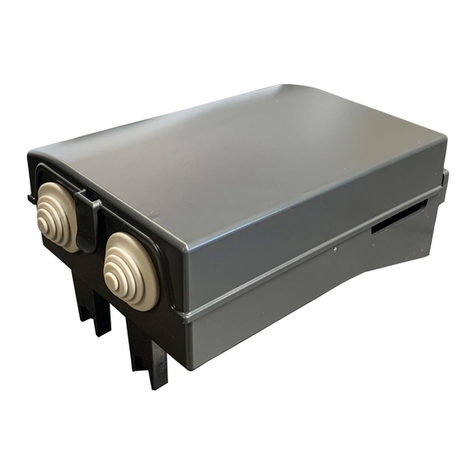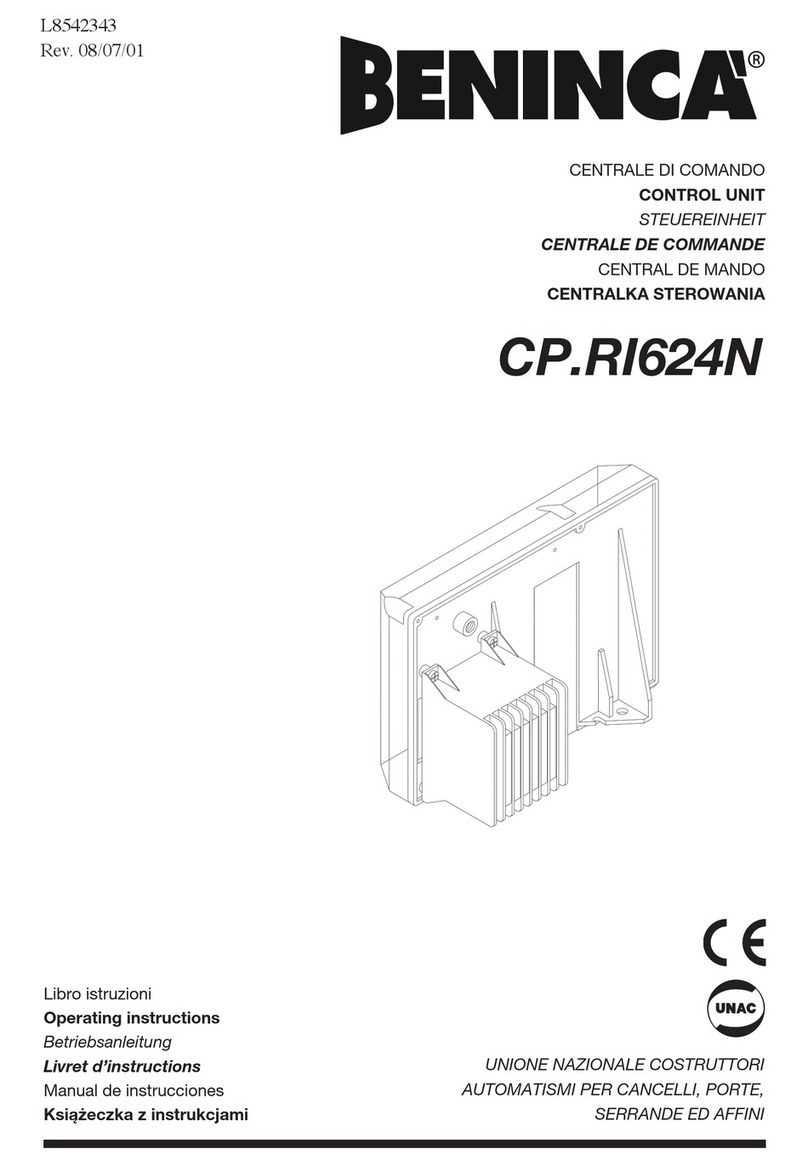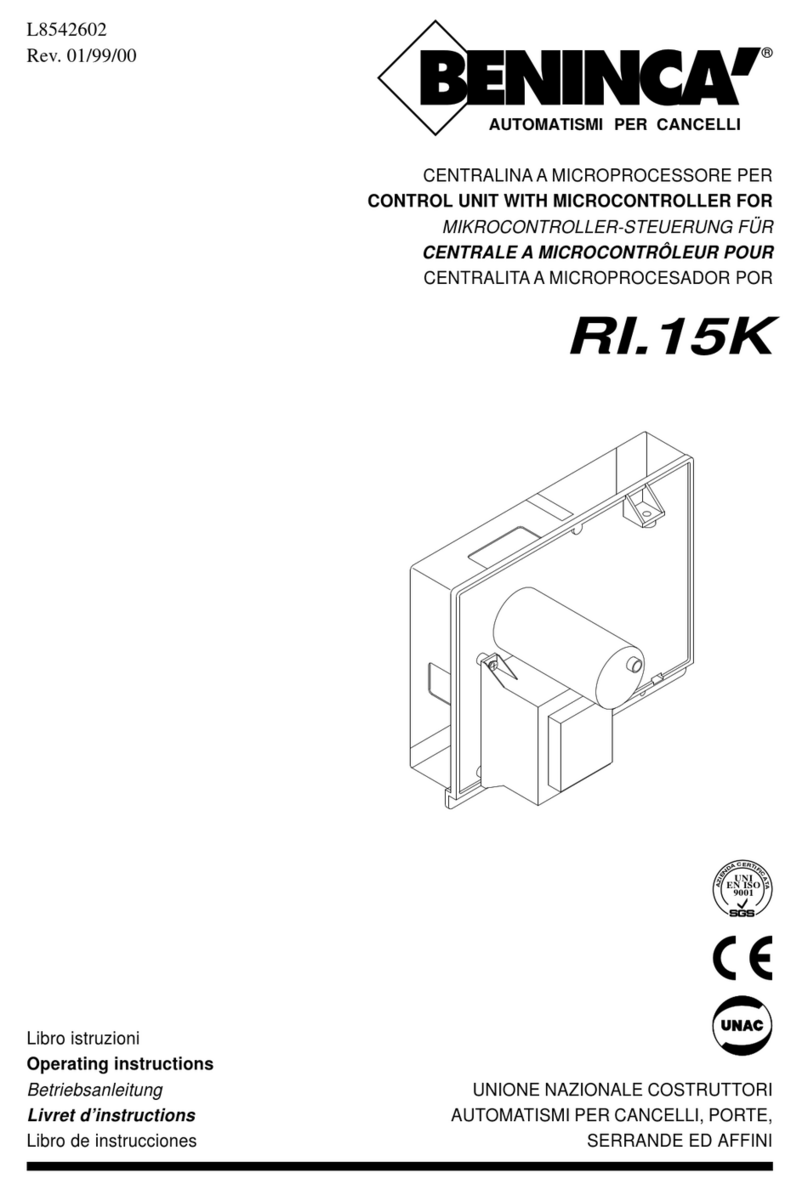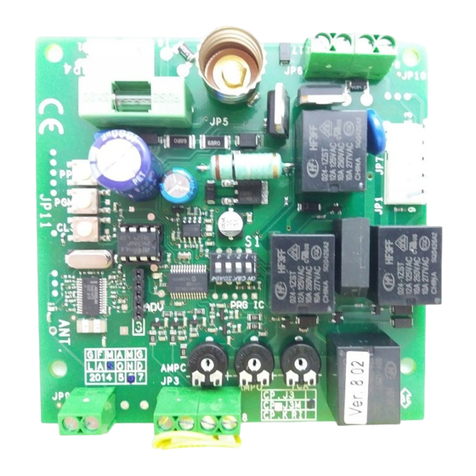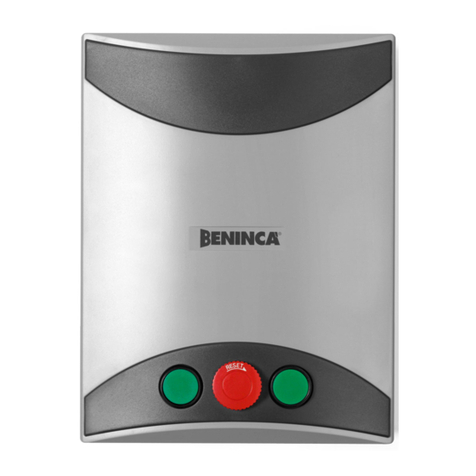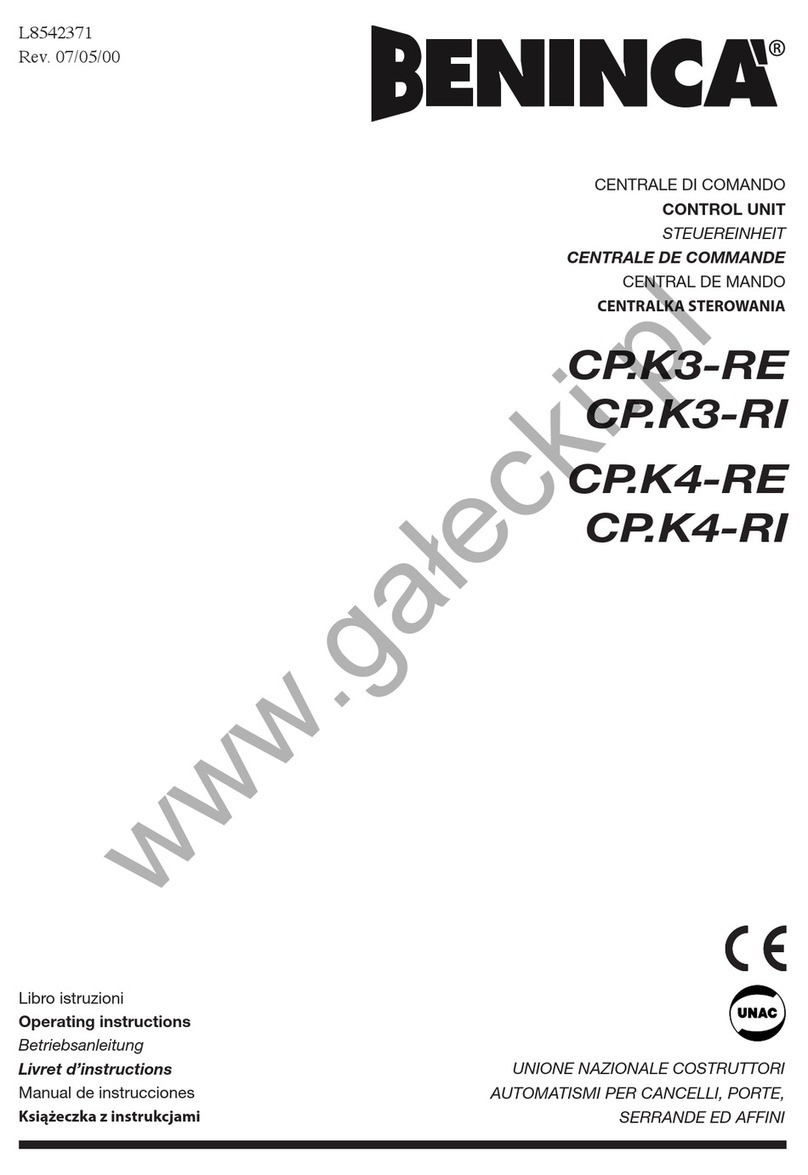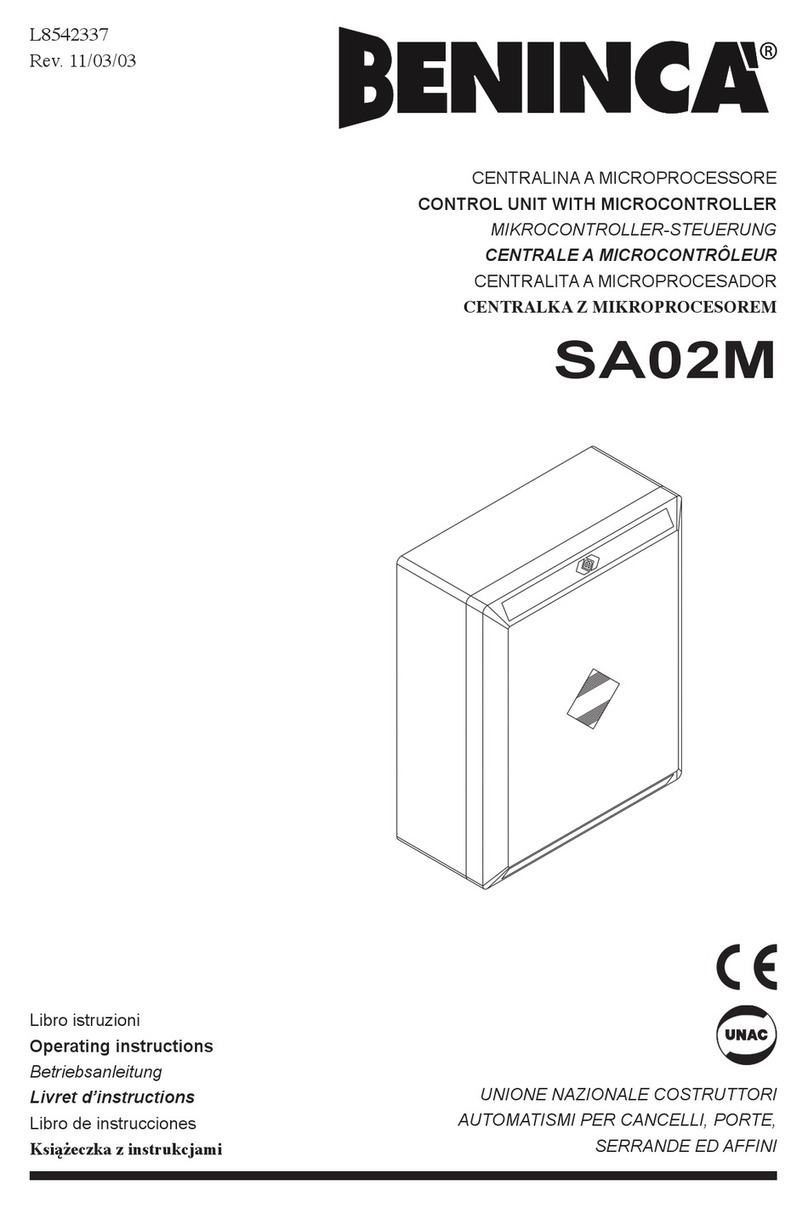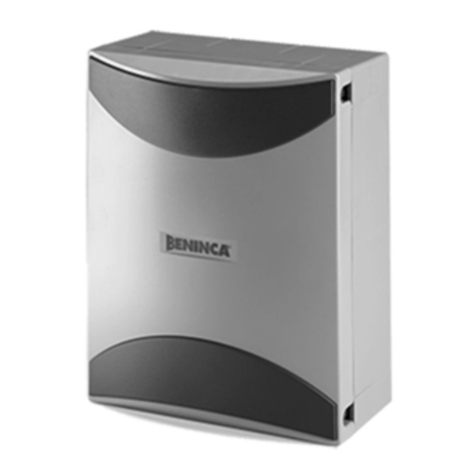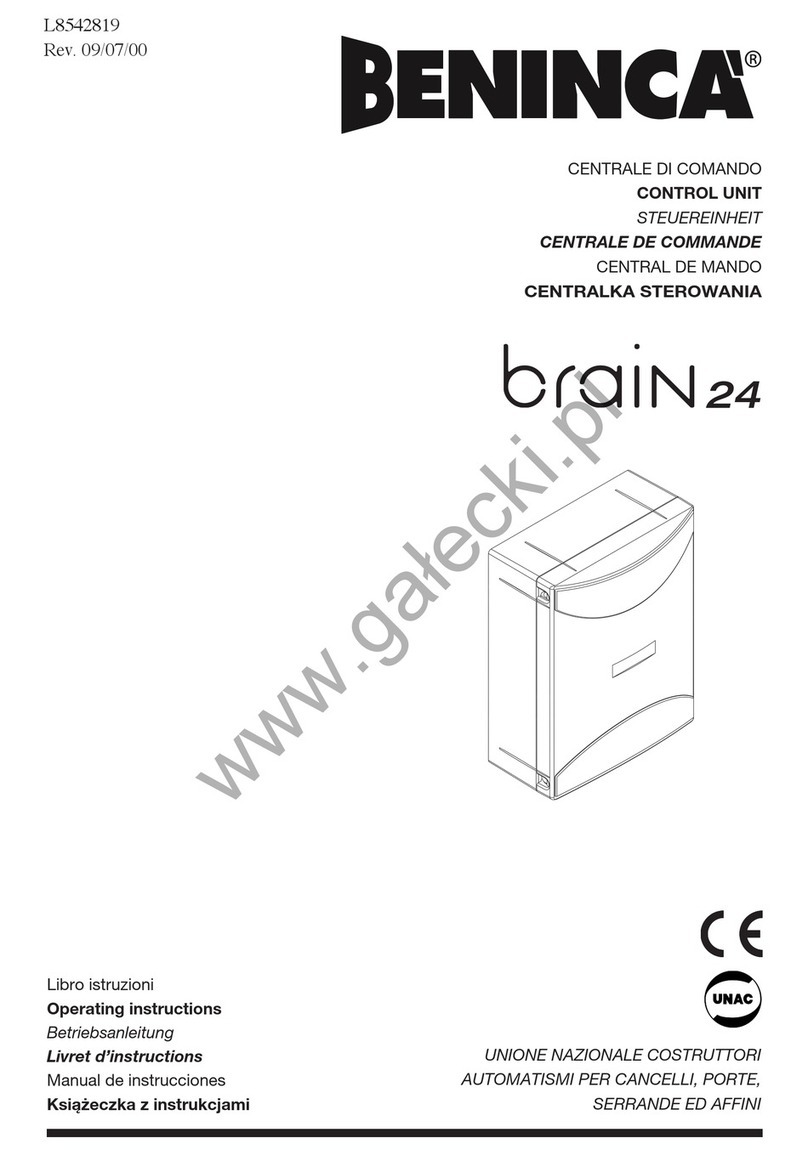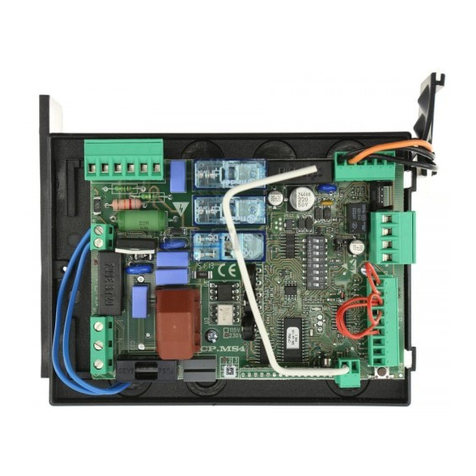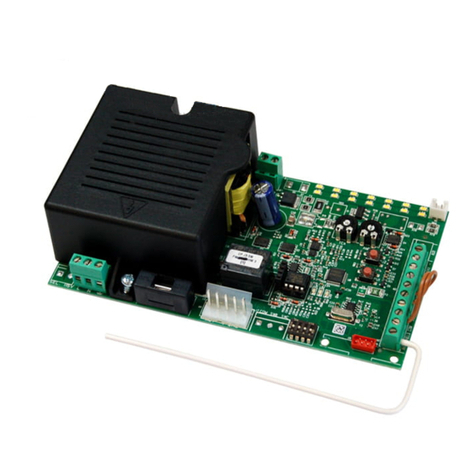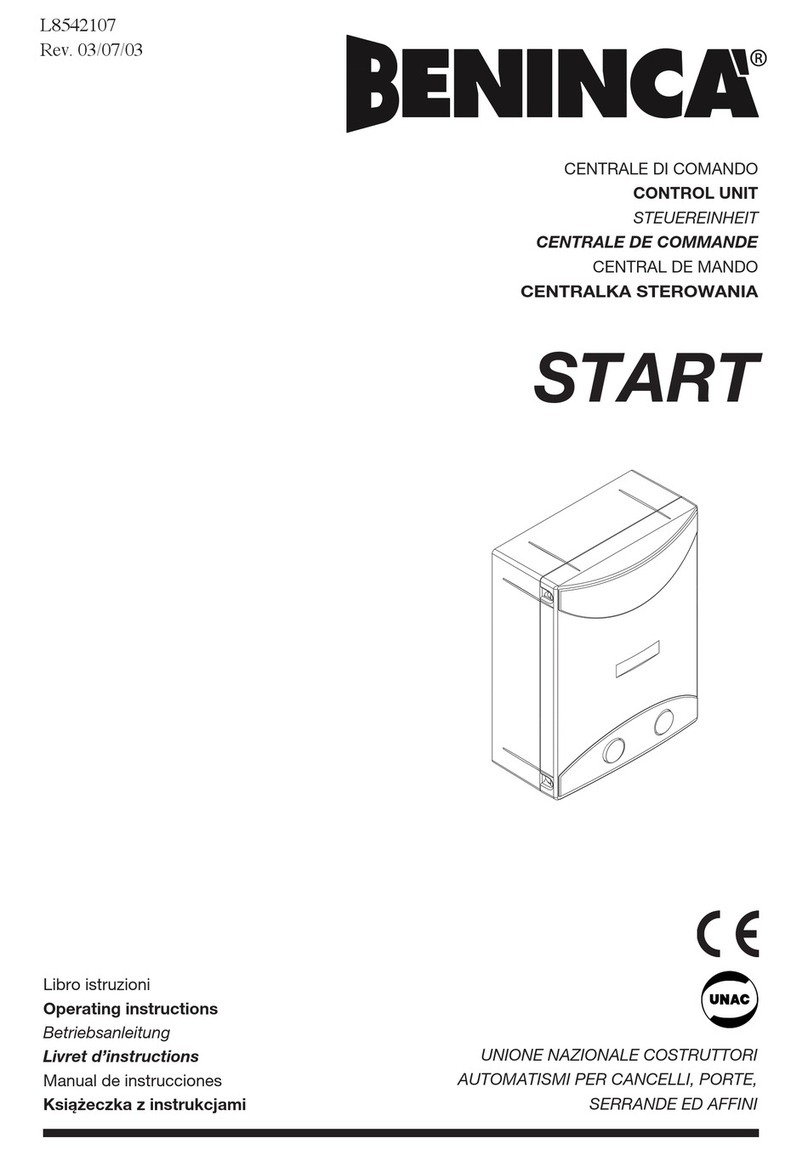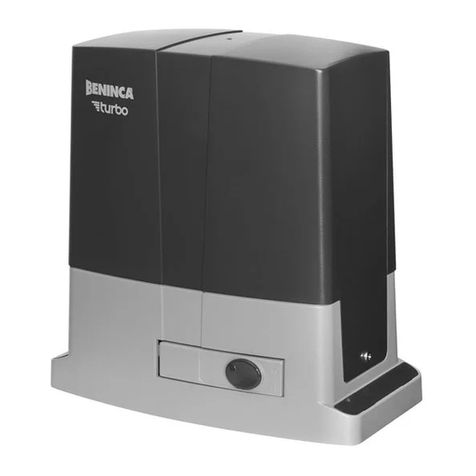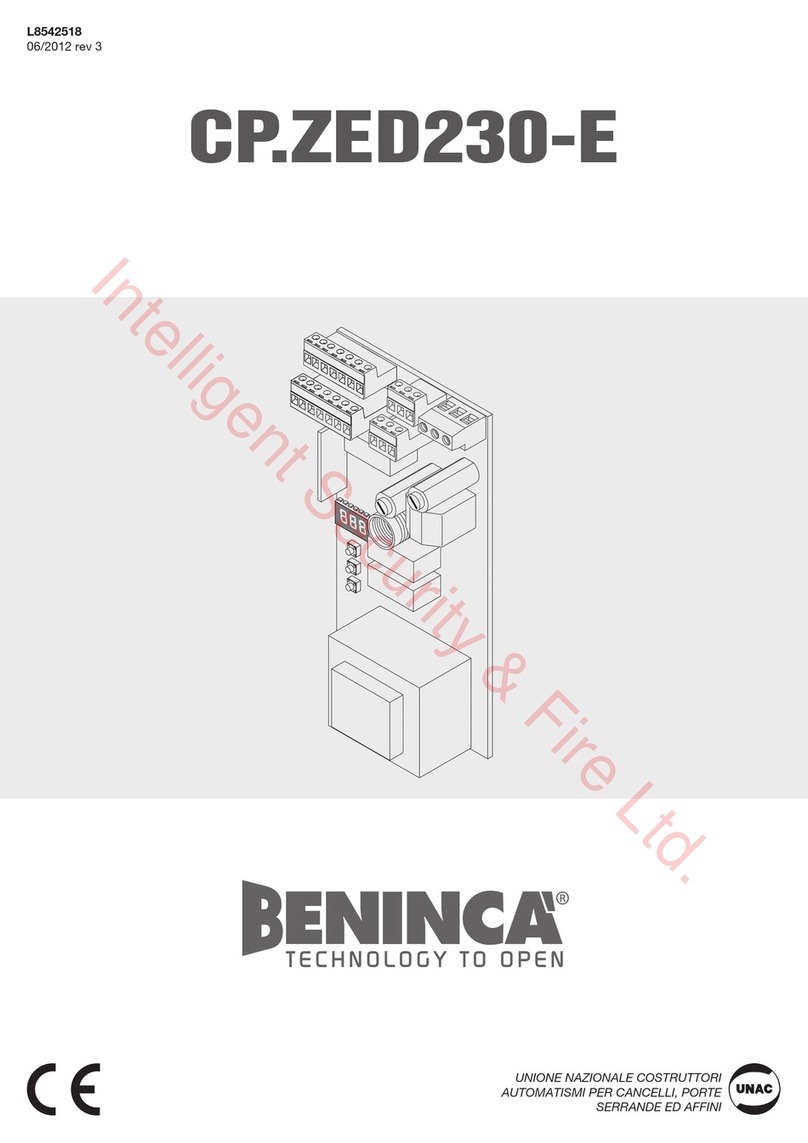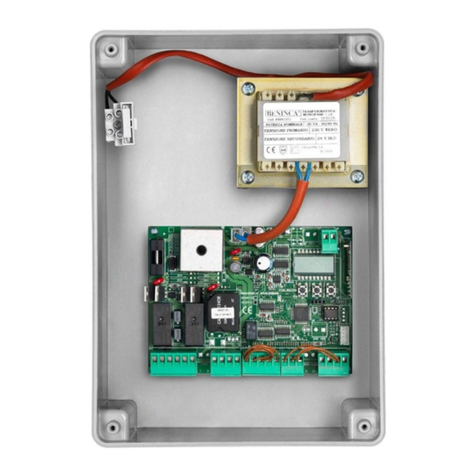
MENU FUNZIONE ON-OFF-(Default) MEMO
LOGICHE
NOlS
Seleziona la modalità di funzionamento del sensore amperometrico in presenza
o assenza dei finecorsa.
On: Finecorsa assenti. Durante il tempo TSLD l’intervento del sensore ampero-
metrico viene interpretato dalla centrale come finecorsa ed arresta il motore.
Durante il tempo TM il sensore amperometrico viene interpretato dalla centrale
come presenza di ostacolo e NON arresta il motore, ma esegue l’inversione.
Ne consegue che senza finecorsa il tempo TM deve essere inferiore al tempo
di corsa totale.
Nota: Chiudere i contatti dei finecorsa con dei ponticelli se si desidera utilizzare
questa funzione.
Off: Finecorsa presenti. L’intervento del sensore amperometrico viene interpre-
tato dalla centrale come presenza di ostacolo sul movimento dell’anta. Viene
quindi comandato l’arresto e l’inversione per circa 3s, in modo analogo all’in-
tervento della costa.
(OFF)
serL
Abilita o disabilita la funzione luce di servizio sull’uscita 9-10.
On: ad ogni manovra il contatto viene chiuso per circa 90s.
Utilizzare un relè ausiliario (24Vdc/500Ω min) per il comando della luce.
Off: L’uscita ha la funzione SCA, spia cancello aperto: contatto aperto ad anta
chiusa, intermittente durante il movimento dell’anta, contatto chiuso ad anta
aperta.
Vedi schema di collegamento.
(OFF)
HAM
Abilita o disabilita la funzione colpo di inversione
On: Funzione abilitata. Prima di ogni manovra di apertura o chiusura la centra-
le comanda una manovra di 2s in direzione opposta per facilitare lo sgancio
dell’elettroserratura.
Off: Funzione disabilitata.
(OFF)
2ch Non utilizzare
MENU FUNZIONE
NMAN
Visualizza il numero di cicli completi (apre+chiude) effettuate dall’automazione.
La prima pressione del pulsante <PG>, visualizza le prime 4 cifre, la seconda pressione le ultime 4.
Es. <PG> 0012 >>> <PG> 3456: effettuati 123.456 cicli.
RES
RESET della centrale. ATTENZIONE!: Riporta la centrale ai valori di default.
La prima pressione del pulsante <PG> provoca il lampeggio della scritta RES, una ulteriore pressione del pul-
sante <PG> effettua il reset della centrale.
Nota: Non vengono cancellati i trasmettitori dalla ricevente.
REGOLAZIONI VELOCITA’ ANTA
Nella figura a fianco è rappresentato l’andamento della
velocità dell’anta (asse V) al variare del tempo (asse T).
Lo schema è valido sia in apertura e in chiusura, per en-
trambi i motori.
A seguito di un comando (START), l’anta inizia la manovra
con la velocità standard.
In questa fase la coppia è regolata dai parametri PMO1/
PMO2 per la fase di apertura, PMC1/PMC2 per la fase di
chiusura.
L’anta procede quindi a velocità standard per tutto il tem-
po impostato dal parametro TM1/TM2.
Inizia quindi la fase di rallentamento della durata imposta-
ta dal parametro TSLD.
La velocità durante la fase di rallentamento è regolata dal parametro SLDS.
Prima del termine del tempo TSLD l’anta deve incontrare il finecorsa FC o il fermo meccanico (intervento del sensore amperometri-
co). Per una corretta impostazione dei parametri procedere come segue:
Verificare che logica NOLS sia correttamente impostata in base alla presenza o meno dei finecorsa.
Con NOLS=OFF (finecorsa presenti):
1 Disabilitare i rallentamenti (SLD=OFF)
2 Eseguire una apertura o una chiusura completa cronometrando il tempo necessario.
3 Impostate il valore rilevato sul parametro TM1/TM2 togliendo il tempo di rallentamento desiderato (ad esempio: apertura comple-
ta di 25s, si desidera un rallentamento di 5s, impostare TM1/TM2 su 20s).
4 Impostate il valore TSLD in modo che sia di qualche secondo superiore al tempo di rallentamento (nel nostro esempio:10s).
5 Riattivare i rallentamenti (SLD=ON)
6 Impostare i valori PMO/PMC in accordo con le normative vigenti.

